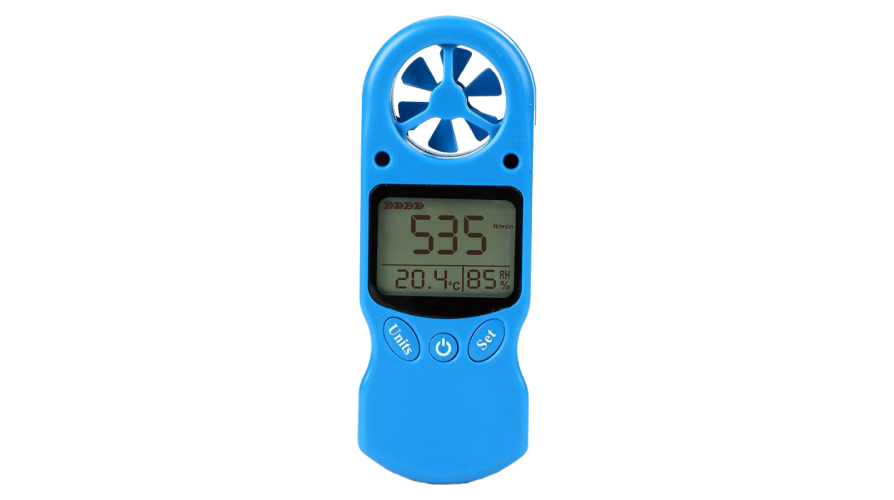How an Anemometer Can Improve Your Weather Monitoring System
How an Anemometer Can Improve Your Weather Monitoring System
Blog Article
Discovering the Features and Benefits of Anemometers for Weather Enthusiasts and Specialists
From cup anemometers to sonic anemometers, each type brings its one-of-a-kind set of advantages and applications, dropping light on various aspects of atmospheric conditions. As we dig into the functions and benefits of anemometers, a deeper understanding emerges not only of dominating weather sensations however additionally of the more comprehensive implications for markets like wind energy manufacturing and environmental research study.
Value of Anemometers in Weather Tracking
Anemometers play a critical function in climate surveillance by supplying precise measurements of wind speed, assisting in forecasting and understanding climate patterns. These tools, ranging from traditional cup anemometers to contemporary ultrasonic anemometers, are necessary for meteorologists, scientists, and weather enthusiasts alike.

Types of Anemometers and Their Applications
With the vital duty anemometers play in weather condition monitoring and projecting, recognizing the numerous kinds of these instruments and their applications ends up being necessary for experts and lovers in the field. The most common types of anemometers consist of mug anemometers, vane anemometers, hot-wire anemometers, and ultrasonic anemometers. Mug anemometers include three or 4 cups placed on straight arms that rotate with the wind, determining its speed. Vane anemometers, on the other hand, utilize a freely rotating vane to align with the wind instructions, giving both wind speed and direction measurements. Hot-wire anemometers run based upon the concept of convective warmth transfer, where the cooling effect of the air flow is gauged to identify wind speed. Ultrasonic anemometers utilize ultrasonic acoustic wave to determine wind rate and instructions properly.
Cup anemometers are robust and suitable for basic weather condition monitoring, while vane anemometers are preferred for directional measurements. Ultrasonic anemometers are non-intrusive and provide high precision, often utilized in study and specialized weather condition monitoring applications.
Benefits of Utilizing Anemometers in Forecasting
In weather forecasting, the application of anemometers offers important benefits for boosting the accuracy of climate forecasting. Anemometers gauge wind rate and instructions, giving critical information for forecasting weather condition patterns. By including wind information into forecasting designs, meteorologists can much better recognize the activity of weather systems, anticipate changes in climatic problems, and concern more precise forecasts.
Additionally, anemometers play a vital role in examining prospective climate hazards. Keeping track of wind rates assists forecasters forecast extreme weather events such as storms, tornadoes, and winter season tornados with higher precision. This very early warning system enables authorities to provide timely informs and carry out needed precaution, minimizing the threats to life and home.
Furthermore, anemometers assist in enhancing sustainable energy manufacturing. By examining wind patterns, meteorologists can recognize suitable areas for wind farms and anticipate power result, contributing to the reliable generation of wind power.

Anemometers in Wind Power Manufacturing
Given the crucial role anemometers play in supplying accurate wind information for weather condition projecting and hazard analysis, their importance reaches the world of wind energy production. Anemometers are crucial instruments in the area of wind energy, where the dimension of wind rate and direction is critical for figuring out the expediency and efficiency of wind generator installments. By precisely measuring wind speeds at differing elevations, anemometers aid enhance the placement and style of wind turbines to make the most of energy result.
In wind farms, anemometers are tactically put to collect real-time wind data that is utilized to examine the potential power production of a website. This data contributes in determining the economic practicality of wind power tasks and in forecasting energy generation to ensure grid stability. Additionally, anemometers help in keeping an eye on wind conditions to maximize turbine performance, protect against damage from high winds, and make sure the safety and security of workers working in the location of wind turbines.
Enhancing Climate Recognizing With Anemometers

Anemometers play a crucial role in enhancing our understanding of microclimates. These local weather can vary significantly from more comprehensive regional projections, making it essential to have accurate information for particular locations. anemometer. By purposefully placing anemometers in various areas, scientists can gather in-depth details on how wind acts in different surfaces, urban atmospheres, or bodies of water
Moreover, anemometers add to improving weather condition projecting designs by offering real-time information on wind actions. This information is particularly important for forecasting serious climate events, enhancing farming techniques, and sustaining markets like air travel and maritime navigation. Overall, anemometers are vital tools that enable us to delve much view it now deeper into the complexities of weather systems, eventually leading to even more better-informed choices and accurate predictions.
Verdict
In final thought, anemometers play an important duty in weather surveillance and forecasting by gauging wind speed and instructions. They are vital tools used by climate lovers and specialists to collect precise next page data for forecasting climate patterns and assessing potential influences. Anemometers additionally have applications in wind power manufacturing, more highlighting their importance in both meteorology and renewable energy fields. On the whole, anemometers add to boosting our understanding of weather phenomena and boosting forecasting capabilities. anemometer.
From mug anemometers to sonic anemometers, each type brings its special collection of benefits and visit this site right here applications, losing light on numerous aspects of climatic conditions. These instruments, ranging from conventional mug anemometers to modern-day ultrasonic anemometers, are essential for meteorologists, researchers, and climate enthusiasts alike. The most common types of anemometers include mug anemometers, vane anemometers, hot-wire anemometers, and ultrasonic anemometers. Cup anemometers are durable and suitable for basic climate surveillance, while vane anemometers are favored for directional measurements. Anemometers are necessary tools in the field of wind energy, where the measurement of wind rate and direction is essential for establishing the usefulness and effectiveness of wind generator installments.
Report this page